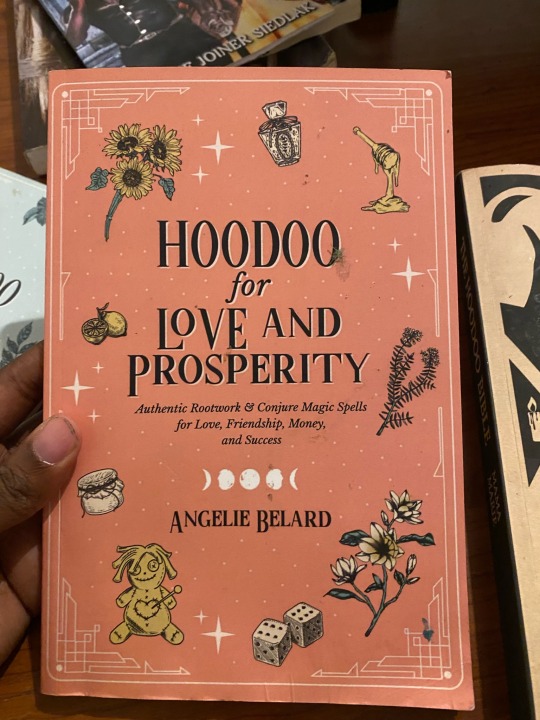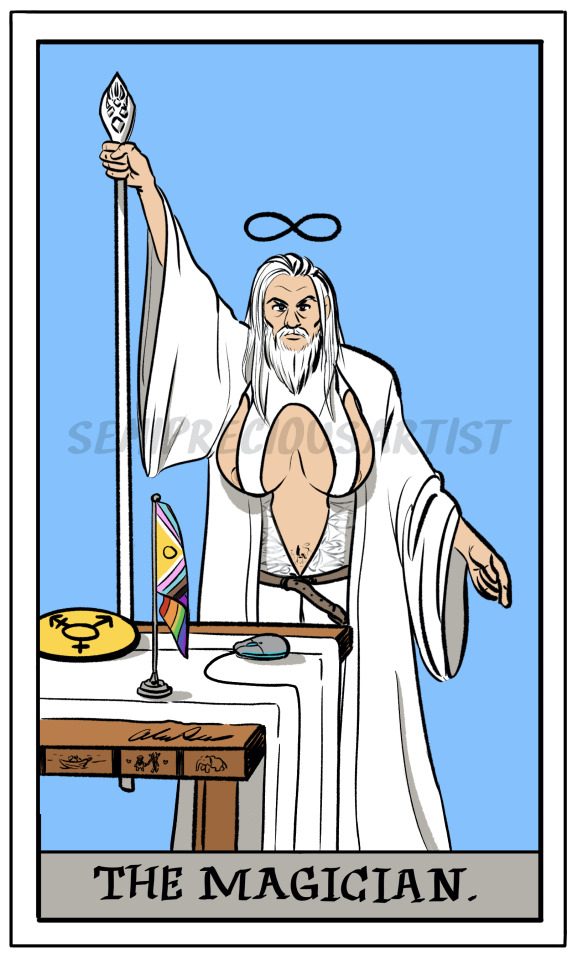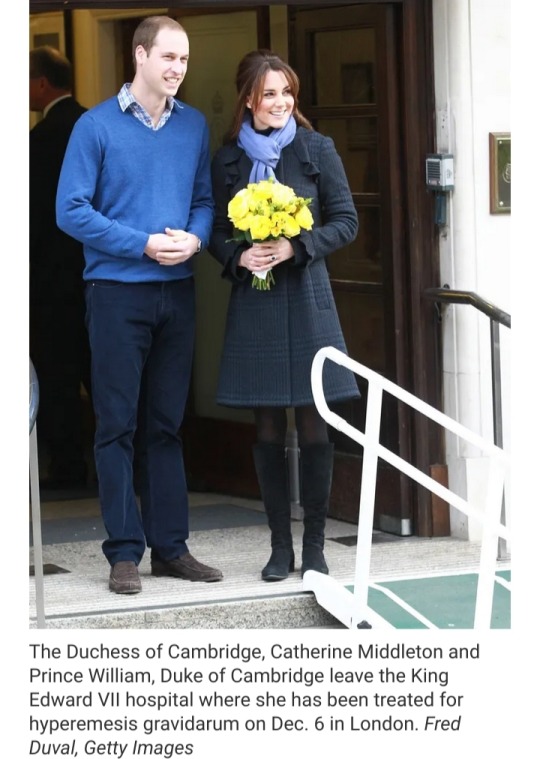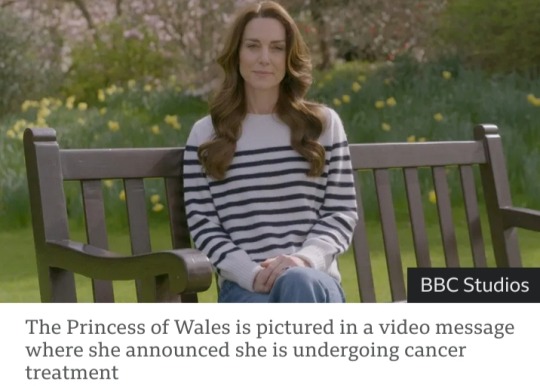#viral culture
Explore tagged Tumblr posts
Text

Tests Included in Comprehensive Pediatric Health Assessments for Detection and Management of Viral Infections: Comprehensive pediatric health assessments entail a variety of examinations and screenings aimed at identifying and addressing viral infections. These assessments may comprise:
1. Throat Swabs: Utilized to collect samples for laboratory analysis, particularly in suspected cases of respiratory viral infections like influenza or respiratory syncytial virus (RSV). Samples are scrutinized for viral genetic material presence through polymerase chain reaction (PCR) or alternative molecular testing approaches.
2. Blood Tests: Conducted to evaluate various parameters indicative of viral infection, such as white blood cell count, inflammatory markers, and specific antibodies. These tests aid healthcare providers in detecting viral pathogens and monitoring the body's immune response to infection.
3. Respiratory Samples: Including nasopharyngeal or nasal swabs, to detect viruses causing respiratory illnesses like the common cold, influenza, and COVID-19. These samples undergo analysis using molecular testing techniques to identify responsible viral pathogens.
4. Serological Testing: Involves analyzing blood samples to detect specific antibodies produced by the immune system in response to viral infection. Serological tests offer insights into past or present viral infections and can be beneficial for assessing immunity post-vaccination or natural infection.
5. Viral Culture: Occasionally performed to isolate and identify the causative virus from clinical specimens such as respiratory secretions or blood. Viral culture entails inoculating the specimen onto specialized cell culture systems to facilitate viral replication and subsequent identification via laboratory techniques.
Several good hospitals in Mumbai offer health checkup packages for children. For example, a regular full body health checkup at Saifee Hospital Mumbai can help in the early diagnosis and treatment of viral
#viral infections#throat swabs#PCR#blood test#nasal swabs#common cold#influenza#setological testing#viral culture#full body health checkup#regular health checkups#health checkup packages
0 notes
Text





BEYONCÉ OFFICIALLY WINS ALBUM OF THE YEAR FOR HER HISTORIC MASTERPIECE “COWBOY CARTER.”
SHE DID IT! THE GRAMMY’S HAVE FINALLY GOTTEN IT RIGHT. BEYONCÉ BECOMES THE FIRST BLACK WOMEN IN 26 YEARS TO WIN AOTY. SHE ALSO BECOMES THE FIRST BLACK PERSON TO WIN BEST COUNTRY ALBUM AND BECOMES THE FIRST BLACK WOMAN AFTER THE POINTER SISTSER’S TO WIN A GRAMMY COUNTRY AWARD, IN OVER 50 YRS!!!!!
WITH 11 GRAMMY NOMS BEY BREAKS THE RECORD FOR MOST NOMS BY A FEMALE ARTIST IN A SINGLE YR. BEY BECOMES THE FIRST WOMAN TO BE NOMINATED IN 5 DIFFERENT GENRES. HERSTORY HAS BEEN MADE BY THE ICON HERSELF!!!!!!! THE GOAT. BEYONCÉ.
#Cowboy carter#herstory#black woman#black women#Cowboy carter era#wow#iconic#pop culture#music#facts#viral#my posts#theblvcksupreme#body#posts#melanin#Grammys#severance#stranger things#taylor swift#Beyoncé#beyonce#self titled#lemonade#renaissance#300#300+
579 notes
·
View notes
Text
Hey !!!!!
If you’re a African-American Hoodoo practitioner, please do not get these three books, as they are written by white people who are doing digital blackface.
Hoodoo is a closed African-American spirituality practice that only African-Americans can practice. We do not have a lot of resources or books written by African-Americans so I will try to provide all the books that I use by actual African-Americans.
It’s upsetting that I find a book about Hoodoo thats written by a white person or a non-African-American person. I don’t like that.
Some African American Hoodoo authors I suggest are:
Stephanie Rose Bird
Monique Joiner Siedlak
and Tayannah Lee Mcquillar



#hoodoo#hoodoo book collection#hoodoobooklist#hoodooheritagemonth#hoodoo practitioner#hoodoo information#hoodoobooks#African American#aa#african american spirituality#rootwork#boost#viral#black spirituality#trending#soulaan#souls and#african american culture
837 notes
·
View notes
Text

#african#afrakan#kemetic dreams#africans#brownskin#brown skin#afrakans#african culture#micheal jackson#moonwalk#skating#epic video#viral video
128 notes
·
View notes
Text

#book of bill#billford#sixer#ford pines#deadpool 3#bill cypher#stanford pines#deadpool x wolverine#viral trends#foryou#gayboy#gay men#gayman#gay culture#gay pride#gay boys#trans#transfem#trans pride#transmasc#trans woman#trans joy#f1 2024#italian gp 2024#formula one#dutch gp 2024#f1 memes#monza gp 2024
85 notes
·
View notes
Text
Tethers: The Unapologetic Irony of Disrespect
(Now with a Checklist for the Musty and Misguided)

How You Gonna Flee Here and Then Act Like You’re Better Than Us?
Let’s be crystal clear: Black Americans didn’t start this. For centuries, we’ve been the most accepting, open-armed culture on this planet. We birthed the style, the swag, the music (you’re welcome for hip-hop), and the very civil rights that let tethers and their parents even think about coming to America.
But some of y’all tethers—or worse, tether apologists—got bold. Instead of gratitude, you came over here with funky pits, goat-scented baggage, and disrespect for the very people who built the damn table you’re eating at.
Now, you’re out here crying “divisiveness” when we clap back? In the words of Ice Cube’s Doughboy:
"Bitch, shut up, ain't nobody talking to you."

The Tether Humility Checklist
A Mandatory Guide for Musty Apologists Before You Embarrass Yourself
If you’re feeling bold enough to argue with Black Americans about their own history, culture, or struggles, please complete the following checklist first. It’s not just for your sake—it’s for the sake of everyone who might witness your misguided attempt at debate.
☑️ 1. Did Your Parents Flee Their Home Country?
Yes ☐ No ☐
If you checked “Yes,” congratulations—you’ve confirmed that your parents literally ran away while Black Americans stayed and built. Your argument is already on thin ice.
☑️ 2. Do You Call Black Americans “Immigrants”?
Yes ☐ No ☐
Fact check: Black Americans didn’t immigrate; they were enslaved. If you checked “Yes,” please take a remedial history class and kindly shut up until further notice.
☑️ 3. Do You Compare Your Hustle to Ours?
Yes ☐ No ☐
If you’re out here saying things like, “My parents came here with nothing and now we’re thriving!” without acknowledging the systemic oppression Black Americans endured for centuries, your comparison is invalid. Take a seat.
☑️ 4. Do You Think Criticism Is “Divisive”?
Yes ☐ No ☐
Calling out disrespect isn’t divisive—the disrespect itself is. If you checked “Yes,” consider whether your silence would be a better contribution to unity.
☑️ 5. Can You Dance, Rap, or Dress Without Imitating Black Americans?
Yes ☐ No ☐
If your swag, slang, or music taste owes any debt to Black American culture, maybe reflect on who you’re disrespecting before you start running your mouth.
Important Note: If you checked “Yes” for ANY of the above, do yourself a favor and sit this one out. You’re not prepared for the intellectual smoke.

The Division Argument: A Convenient Cop-Out
Whenever Black Americans defend ourselves, someone inevitably cries, “This is just sowing division!” To which we say:
Division started when tethers showed up disrespecting us.
If you’re so worried about unity, how about you direct that energy toward tethers who badmouth Black Americans while reaping the benefits of our struggle?
Black Americans have always been overly accepting. We let everyone sit at the table, learn the dances, wear the swag, and sing the songs. But what we won’t tolerate is being disrespected in our own house by people who needed our civil rights victories just to walk through the door.
Embarrassing Stats to Back This Up
For any tether apologist feeling brave, here are some hard truths to sit with:
Immigrant Earnings:
According to Pew Research, many Black immigrants earn less than Black Americans despite their “hard work” narrative. So much for running circles around us.
Cultural Impact:
Black Americans contribute over $1.7 trillion annually to the U.S. economy—and that doesn’t include the priceless cultural swag (hip-hop, fashion, slang) everyone else loves to steal.
Who Fought for Rights?
Black Americans fought for civil rights while tethers’ parents were still debating whether to hop on a plane. Those rights protect everyone, yet tethers love acting like we didn’t pave the way.
Acceptance Rates:
Studies show Black Americans are among the most inclusive ethnic groups in America, often supporting immigrant causes more than immigrants support ours. Y’all came here for opportunity—we made that opportunity possible.
Final Thoughts
If you’re a tether or tether apologist feeling attacked right now, maybe reflect on why. Black Americans aren’t sowing division—we’re responding to disrespect. If you’re here enjoying the fruits of our labor, the least you can do is show some gratitude and stop running your musky mouth.
From:
A few fed-up Black American staff members at The Most Humble Blog
✊🏿😑 (We’re tired, and we said what we said.)
Want more unapologetic truth? Follow The Most Humble Blog for the hottest takes, the sharpest wit, and the boldest clapbacks. Because if we don’t keep it real, who will?
#foundational black americans#black american culture#african diaspora discourse#hip hop origins#cultural appropriation#hot takes#tumblr debates#controversial opinions#dark humor#tiktok#instagram#twitter#viral#share#please share#hip hop#donald trump policies#trump#popular posts#humor#funny stuff
36 notes
·
View notes
Text

#youtube#redlettermedia#red letter media#rich evans#jay bauman#half in the bag#gorilla interrupted#mike stoklasa#best of the worst#jack packard#video game#viral#video games#vintage#video#viagra boys#vent#dragon age the veilguard#louis vuitton#vulture culture#vulnerability#vulnerable#vulpix#viktor arcane#vodka#vocaloid#voltron#vote democrat#vyncent sol#vylet pony
23 notes
·
View notes
Text

#dark academia#halloween#dark aesthetic#vampire#dark core gothique#horror lover#ghost#music#artists on tumblr#goth aesthetic#gothic#new music#halloween playlist#gothic vampire#gothic song#vampire pictures#horror#goth#trending#vampire culture#videos#viral trends#tiktok band#tiktok song#tiktok videos#viral tiktok#tiktok#tiktok viral#tiktok video#tiktok views
37 notes
·
View notes
Text
Name a tv show you wished HADN’T gotten cancelled so soon. I’ll go first; for me that show is Star Wars: The Acolyte! Let me know yours!
32 notes
·
View notes
Text


Gandalf Big Naturals Tarot Card? The internet is a wondrous thing Stickers here!
#i only made 10 please buy one#gandalf big naturals#becca.teeth#internet culture#one of my favorite meme/viral images honestly#lotr#lotr meme#rider tarot#art#digital art#sticker
271 notes
·
View notes
Text


The most powerful moment of the coronation of King Charles III was not the gold glittering off carriages or epaulettes — not the pomp and show and signifiers of power.
It was precisely their opposite: when Charles shed his gold robes and stood in a thin white shirt, his frail humanity implied.
Then a screen was erected around him and, shielded, he had a private consultation with the Archbishop of Canterbury, who dabbed anointing oil with his hands on Charles’s bare breast.
"This was the most solemn and personal of moments,” Buckingham Palace said.
Charles was bare before God, in privacy, God being one of the last beings with no need to sign a non-disclosure agreement.


The Princess of Wales looked on as the screen shielded her father-in-law.
By contrast, she was at that point the most magnificent she had ever been, swathed in layer upon layer of regality, the dress, the robes, the hanging chains, headpiece and ribbons all serving to move the viewing gaze — subjects in every sense — from our awareness of Catherine Middleton with her everyday human DNA and towards the shared fiction of her transcendent queenliness.
Less than a year later, this moment is remembered with new and terrible power.
It is spring again, but it’s a time of hard Lenten moral reflection for us as a nation, in relationship to our royals, as well as an ever more voraciously unprivate modern celebrity culture.
Both the King and the princess have cancer, the latter’s disclosed by Catherine in an unprecedented video address on Friday, March 22.
Catherine’s speech was something of a plea bargain in which she traded not only her customary silence but her most personal of health ordeals in order to put an end to toxic rumours swirling online that had become in tone like an unruly mob rattling at the palace gates.
Or rattling at the figurative locks on her medical notes, with three workers at the London Clinic, where she and the King were treated, suspended and under investigation for allegedly trying to access her records (hers, it is important to note, the King’s were unmolested).

📷: Getty Images
What was so powerful about the anointing of the King was the sacredness of that space in which he could be fully human away from observation and judgment.
There should be another one-on-one consultation that is sacred, where anyone, from King to princess to pauper, can expect to be shriven in total privacy, and that is the sanctity of the medical room.
It used to be that priests were our only bound confidants, we could trust them to be privy to all our spiritual ills.
Now doctors are our secular priests: bound by law and ethics to enshrine confidentiality at the heart of the patient relationship.
As a result, our medical privacy in an age of oversharing and online surveillance feels both stranger and more necessary.
If we knew our every GP-inspected rash was to be posted on TikTok for the nation, many of us would quite literally die of embarrassment.
The King’s appointment behind the three-sided screen can now be viewed through the lens of royal illness.
The lavishly embroidered panels and expensive white shirt now replaced by the flimsy three-sided ward screen on wheels and thin hospital gown that can humble us all.
But it also enacts a principle at the very heart of becoming the monarch.
The medical-like screen is erected in the coronation to tell us there are some places the public cannot go; to tell us that there are sacredly personal moments in which a person, any person, however swathed in our projections of power, needs to be nakedly human.
Otherwise, they will go mad. We need to make sure the screens are erected around Catherine now.

Much is said, quite a lot of it by Prince Harry himself, of the dangers of the wives of the princes repeating the tragic history of their mother, Princess Diana, hunted by photographers.
He remains phobic to any hint of tabloid persecution or paparazzi chase. But this is a sideshow, even an anachronism in 2024.
He and others have not recognised how the “chase” has changed. Who needs paparazzi when there are a billion citizen hacks ready to take pictures with their phones, in case a convalescing woman nips to a Windsor farm shop with her husband?
Instead, the appetite now is not to see but to know.
The royals used to have a contract with the public: we pay for them, and in return, they give us their presence.
Nearly all of their official job is to do with surface: to show up, to put in appearances at a set number of functions, whether at the opening of parliament or the opening of a leisure centre.
But now parts of the online mob seem to be staging a coup. We want more than the surface, we want to puncture the skin barrier of the royal family and occupy from the inside.
The “fans” have become an invasive virus. The royal analogy is often that they are trapped in a gilded zoo. This new model, instead, casts the royals more as lab rats.

When Catherine disappeared from view in January after announcing a “planned abdominal operation,” the response from internet truthers was one of irate entitlement.
They are now the 1980s tabloids: ravening for intimacies and making stuff up when thwarted.
This wasn’t the boomer generation, who are both more respectful of the royals and more private about their own health.
It was the fortysomething mothers frustrated when they can’t track the phone location of everyone in their life; or the twentysomethings on Snap Map.
Both desperate for their personalised new Netflix season of “The Royals” to drop.
Catherine presents with such stoicism and dignity, it is easy to forget where this new invasiveness started: when she was pregnant with Prince George in December 2012 and hospitalised for extreme morning sickness.
While she was sleeping on the ward, a radio station in Australia rang the hospital switchboard pretending to be the Queen.
They broadcast the nurse’s comments about Catherine’s “retching.”
One could only find this prank funny if Catherine had already — a young, wretchedly ill, pregnant woman — been dehumanised.
George is now ten and his mother hospitalised again, and in that decade, the physical security of ill royals may have tightened but their claim to bodily autonomy seems to have weakened.

Some say Kensington Palace “brought it on themselves” by their wish for discretion; this claim is duplicitous.
The late Queen Elizabeth II became increasingly debilitated in her final years with not much detail ever given; just as her father, King George VI, died without disclosing his lung cancer.
I’m glad that the British do not subject their heads of state to the same publicised medical reports as the president of the United States; one shouldn’t have to present a stool swab to sit on the throne.
No, instead the apparent justification of all those clicking and posting conspiracy theories “worried for Catherine’s welfare” was this sinful truth.
As a beautiful, 42-year-old mother of three, her drama was more box office than the ailments of those older, a pound of her flesh was worth more.
Pity, Susan Sontag said in her 1978 book Illness as Metaphor, is close to contempt.
Back then cancer was still taboo. Those around the patient, Sontag says, “express pity but also convey contempt.”
Ask any cancer patient and they will say they don’t want pity: it is too isolating, it sets them apart, an unwanted privilege.
This is why the video plea of Catherine was one of affinity, rather than pity or privilege.
Last year, she sat in robes in Westminster Abbey at the coronation of her father-in-law, next to her future king son and future king husband.
In her video address last week, she sat on a classically English garden bench, pale, alone and in jeans, as bare of pomp as any royal can be.
No mention of kings or titles, just Diana’s ring on her hand.
Rather she gave an appeal, parent to parent, human to human, about her “huge shock” and her care for her “young family.”
And, finally, her kinship with anyone who lives in a vulnerable human body susceptible to a democratic illness like cancer, “you are not alone.”
Or, to paraphrase Richard Curtis:
“I’m just a girl, standing in front of a public, asking for some time to endure gruelling chemotherapy."

NOTE: Additional photos have been included in this article.
#King Charles III#Prince William#Prince of Wales#Princess of Wales#Catherine Princess of Wales#Catherine Middleton#Kate Middleton#British Royal Family#cancer#chemotherapy#preventative chemotherapy#social media#fake news#click farms#bots#trolls#disinformation#misinformation#viral#abdominal surgery#celebrity culture
80 notes
·
View notes
Text

Behbeh
#grindr#chat#dms#apps#face#face swap#into#not into#bears#lgbtq#queer#2024#summer time sadness#cartoon#gay culture#gay#teddy bear#illustration#bear week#dailybehbeh#behbeh#cute#stuffed animal#art#funny#comedy#daily bear#bear#meme#viral
34 notes
·
View notes
Text

Rhein'2024
https://www.instagram.com/photographyartworks_/
#photographyartworks#photographers on tumblr#original photographers#canon#phone#culture#design#naturephotography#naturepic#nature#landscape photography#landschaft#landscape#rhein#sea#sunrise#sunset#travel#my photos#photography#picture#my work#viral
21 notes
·
View notes
Text
hey guys HEY HEY HEY GUYS HEY HEY
how come we r gonna make 2000s scene n emo, cultures that at its time was looked down upon and its people bullied, trendy and a cool socially accepted things and AT THE SAME TIME look back at like 2000s pop music and disney channel culture and all that and call it cringe and act like no one can like that stuff unironically. do you know what culture you are coopting. lmao.
anyway my point is say what you want but i fucking LOVE lady gaga and britney spears and disney channel and barbies and wearing leggings + skirts + tight sweaters + kiddie t shirts. that shit is cool in my book bro.
#i rant#little rant#emo#emo culture#scenemo#scene#scene culture#scenemo culture#2000s#2000s emo#cringe culture is dead#cringe#i am cringe but i am free#hypocrisy#viral trends#trending#trendy#generic tag#generic tumblr tag#alt#alt culture#alternative#culture vultures#poser
21 notes
·
View notes
Text

lil‘ teaser for my next post!
#retro aesthetic#retrowave#retro style#80s#vintage aesthetic#retro tech#retro#vintage asthetic#retro music#retro futurism#retro japan#sony#walkman#sony walkman#sony wm 32#audio cassette#comeback#trending#latest updates#new album#mixtape#audio tape#cassette tape#come baaaaaaack#cassette collection#cassette culture#cassette player#tapestry#rewind the tape#viral trends
54 notes
·
View notes
Text


#bill cypher#book of bill#ford pines#sixer#billford#deadpool 3#deadpool x wolverine#stanford pines#viral trends#foryou#gayboy#gay men#gayman#gay culture#gay pride#gay boys#trans#transfem#trans pride#transmasc#trans woman#trans joy#f1 2024#italian gp 2024#formula one#dutch gp 2024#f1 memes#monza gp 2024
102 notes
·
View notes